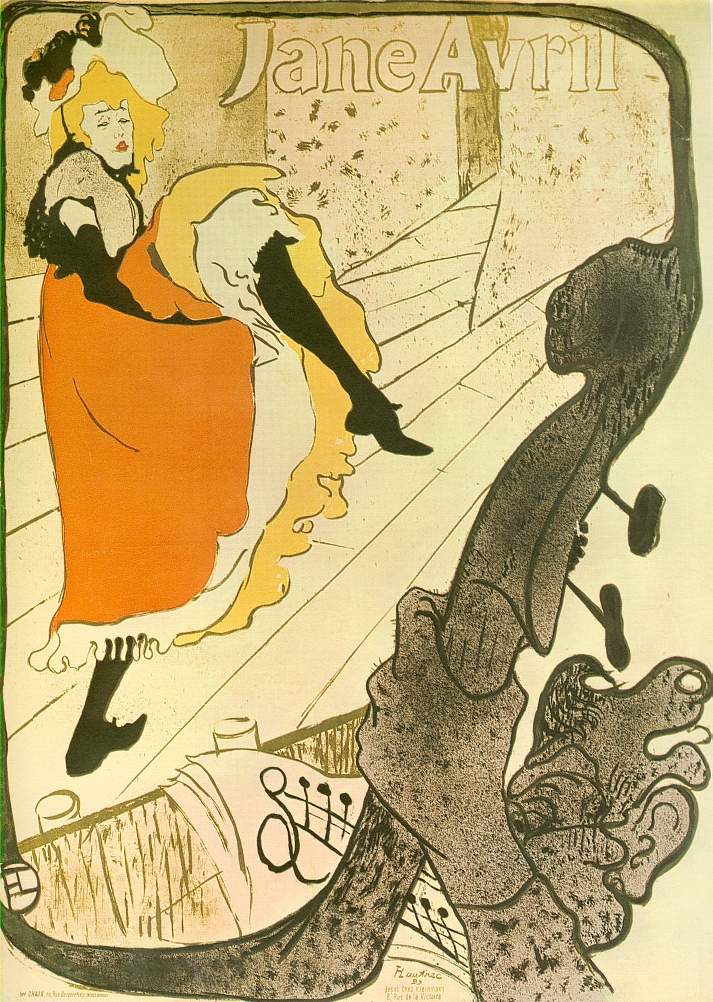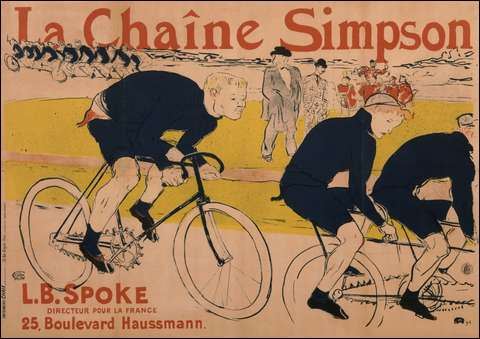On the Stage and On the Page: A Reflection of Celebrity Culture in the Yellow Book
Caitlyn Ng Man Chuen
Ryerson University
2378
The Celebrity in Society

Jane Avril, another 1890s celebrity, 1893
Henri de Toulouse-Lautrec
|
During the 1890s, there
were many female performers, like Yvette Guilbert, that frequented the music
hall. However, not all of these female performers grew to have presences beyond
the stage. Actually, the vast majority of female music hall performers would
not grow to attain celebrity status as Guilbert did. A major contributor to
making a female performer into a celebrity was the media of the time
(Pendley-Hindson 110). Things such as articles, images, and interviews of and
about the performer were prevalent in newspapers and magazines (Hindson 126).
All of this press coverage worked to make the performer relevant in the
cultural landscape. Perhaps, the inclusion of Makower’s text is an example of
this essential pop culture propaganda. This is not to suggest that a
publication such as the Yellow Book would
sell its pages for publicity, but rather that in a time when publications and
the cultural landscape was saturated with images of these celebrities and so
perhaps Makower’s text mirrors that cultural landscape. This would reveal the
extent to which the influence and image of the celebrity would reach, as a text
which was assumed to be a sort of counterculture product would feature someone
that is the product of the masses. This would also perhaps relate to Sickert’s
“The Old Oxford Music Hall” as images of celebrities, the people who would
perform in music halls, were even more common than texts. |
|
Visual memorabilia, such
as postcards, figures, and posters, existed to cement the celebrity’s image in
the public mindset. Perhaps the most common of all these pieces of visual
memorabilia was the entertainment lithograph, which was essentially a poster
that advertised a celebrity, sometimes when she was making a stage performance,
but not always. Capitalism had given rise to a boom in the advertising industry
and lithographs ubiquitously covered all public surfaces. While perhaps these
lithographs were not images of the music hall or other similar points of
interest that Sickert painted, the music hall remained in the public
consciousness because of these celebrity lithographs. Rather than reflecting
the highbrow, avant garde or bohemian culture of fin de siècle England, as
current readers and studiers of the
Yellow Book may assume, perhaps the publication rather reflects the culture
of the general public as it surely reflects the general public’s consciousness
and preoccupation with the female celebrities of the time.
|

A publicity poster from the 1890s
Henri de Toulouse-Lautrec
|


